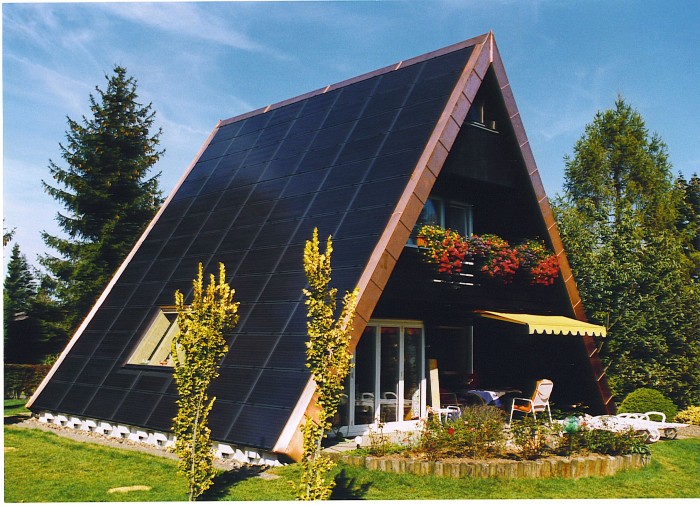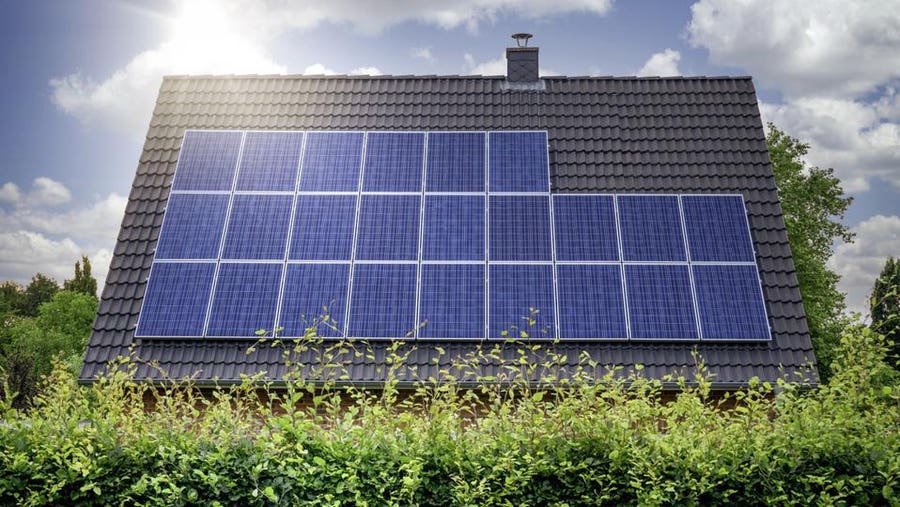
Discover the hidden techniques behind successful home green roof installation.
Unearth the secrets of assessing your roof's load-bearing capacity and selecting the ideal green roof system.
Learn how to prepare your roof for installation, from installing a waterproof layer to implementing a root barrier.
This informative and practical article will guide you through the intricate process of installing a home green roof, empowering you to create a sustainable and eco-friendly environment that offers both beauty and freedom.
Assess Roof's Load-Bearing Capacity
To ensure the successful installation of a green roof on a home, it is crucial to assess the load-bearing capacity of the roof.
This involves conducting a thorough roof inspection and structural analysis to determine if the existing structure can support the additional weight of the green roof system.
A professional roof inspection will evaluate the condition of the roof, including its materials, age, and any existing damage or weaknesses. This will help identify any structural issues that may need to be addressed before proceeding with the installation.

Additionally, a structural analysis will determine the load-bearing capacity of the roof and ensure it can accommodate the weight of the green roof system, as well as any potential snow or water accumulation.
This step is essential to prevent any structural damage or collapse and to ensure the longevity and safety of the green roof installation.
Choose Green Roof System
One crucial step in the installation of a green roof on a home is selecting the appropriate green roof system. This decision will determine the success and longevity of the green roof, as well as the ease of maintenance. To help you make an informed choice, here are four key factors to consider when choosing a green roof system:
- Type of vegetation: Different green roof systems can accommodate different types of vegetation, ranging from grasses and sedums to shrubs and even trees. Consider the desired aesthetic and maintenance level when selecting the system.
- Water management: Look for a green roof system that provides effective water retention and drainage capabilities. This will ensure proper irrigation and prevent water-related issues.
- Structural support: Assess the load-bearing capacity of your roof to determine the suitable green roof system. Different systems have varying weight requirements, so it's crucial to choose one that aligns with your roof's capabilities.
- Maintenance requirements: Consider the level of maintenance you are willing to commit to. Some green roof systems require more frequent upkeep, such as regular watering and pruning, while others are more low-maintenance.
Prepare Roof for Installation
Before beginning the installation process, it is essential to thoroughly prepare the roof for the green roof system. The first step is to conduct a roof inspection to ensure its structural integrity and identify any potential issues. Look for signs of leaks, damaged or weak areas, and ensure that the roof can support the weight of the green roof. It is crucial to address any repairs or reinforcement needed before proceeding with the installation.
Next, consider the planting techniques that will be used. Determine the type of green roof system you will be installing and the specific requirements for planting. This includes selecting the appropriate plants, choosing the right soil composition, and considering necessary irrigation and drainage systems. Proper planning and preparation will help ensure the success and longevity of your green roof installation.
Install Waterproof Layer
Begin by applying a waterproof layer to ensure the integrity of your green roof installation. This layer is crucial as it prevents water from seeping into your rooftop and causing damage. Here are four essential steps to follow when installing a waterproof layer for your green roof:
- Clean the roof surface thoroughly to remove any debris or dirt that may hinder proper adhesion.
- Apply a primer to enhance the bond between the waterproof layer and the roof surface.
- Roll out the waterproof membrane, making sure to overlap the edges to create a seamless barrier.
- Seal all seams with a waterproof adhesive or tape to prevent water infiltration.
By implementing these steps, you can safeguard your green roof from water damage, preserving its longevity and maximizing its benefits.

Regular maintenance, such as inspecting for cracks or tears in the waterproof layer, is necessary to ensure its effectiveness and prolong the lifespan of your green roof.
Install Root Barrier
To ensure the long-term health and stability of your green roof, it is essential to install a root barrier. A root barrier is a physical barrier that prevents the roots of plants on your green roof from penetrating the waterproof layer and causing damage to the building structure.
By installing a root barrier, you can prevent root intrusion and minimize the risk of leaks and structural damage.
There are several benefits to installing a root barrier. Firstly, it helps maintain the integrity of the waterproof layer by preventing roots from growing into it. This reduces the risk of water infiltration and subsequent damage to the building. Additionally, a root barrier can prevent the roots of aggressive plants from taking over the green roof, allowing for a more balanced and diverse plant ecosystem.
When choosing materials for your root barrier, it is important to select ones that are durable and resistant to root penetration. Some common root barrier materials include high-density polyethylene (HDPE), rubberized asphalt, and bentonite clay. These materials are designed to withstand the pressure exerted by plant roots and provide long-lasting protection for your green roof.
Frequently Asked Questions
How Long Does It Typically Take to Install a Green Roof on a Residential Home?
The average duration for installing a green roof on a residential home depends on various factors such as the size and complexity of the project, but typically it can take anywhere from a few days to a few weeks.
Are There Any Specific Building Codes or Regulations That Need to Be Followed When Installing a Green Roof?
Building code requirements and regulations for installing a green roof vary by jurisdiction. It is important to consult local building authorities to ensure compliance. Green roofs offer environmental benefits such as stormwater management and energy conservation.

What Types of Plants Are Best Suited for a Residential Green Roof?
When considering the types of plants best suited for a residential green roof, it is important to select species that can thrive in the specific climate and environmental conditions. Some common choices include sedums, grasses, and native wildflowers. These plants provide numerous benefits, such as reducing stormwater runoff, improving air quality, and providing insulation. However, it is important to consider the challenges that may arise during installation, such as ensuring proper waterproofing, irrigation, and maintenance. By carefully selecting the right plants and addressing potential challenges, homeowners can create a successful and sustainable green roof that enhances their urban landscape.
Can a Green Roof Be Installed on a Sloped Roof or Is It Only Suitable for Flat Roofs?
Installing a green roof on a sloped roof is possible, although it requires additional planning and structural considerations. The benefits of green roofs on sloped roofs include improved stormwater management, energy efficiency, and aesthetic appeal.
Are There Any Maintenance Requirements for a Green Roof Once It Has Been Installed?
Maintenance requirements for a green roof include regular inspection, removal of debris, checking for plant health, and ensuring proper drainage. It is recommended to hire a professional for maintenance, but homeowners can also perform basic tasks themselves.
 Family Craft ProjectsHome ImprovementCooking and BakingReuse and RecycleDIY GiftsEco-Friendly ProjectsDIY Home SolutionsSeasonal ActivitiesFun and GamesLearn TogetherPrivacy PolicyTerms And Conditions
Family Craft ProjectsHome ImprovementCooking and BakingReuse and RecycleDIY GiftsEco-Friendly ProjectsDIY Home SolutionsSeasonal ActivitiesFun and GamesLearn TogetherPrivacy PolicyTerms And Conditions

 Family Craft ProjectsHome ImprovementCooking and BakingReuse and RecycleDIY GiftsEco-Friendly ProjectsDIY Home SolutionsSeasonal ActivitiesFun and GamesLearn TogetherPrivacy PolicyTerms And Conditions
Family Craft ProjectsHome ImprovementCooking and BakingReuse and RecycleDIY GiftsEco-Friendly ProjectsDIY Home SolutionsSeasonal ActivitiesFun and GamesLearn TogetherPrivacy PolicyTerms And Conditions
